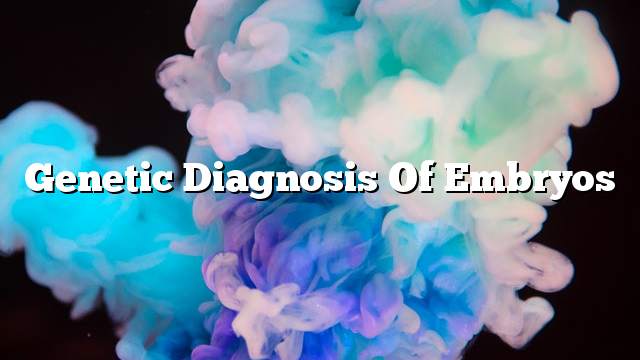Genetic diagnosis of fetuses before returning to the uterus
How is this method done?
The developments in reproductive medicine and IVF in the last few years have been amazing and we have dealt with all of these developments separately, but one of the most important developments in the field of infertility and reproduction was the research on heredity and genetic diagnosis of fetuses before their return to the uterus PGD.
We also know from the method of tube children that the eggs are withdrawn after induction of ovulation and are immunized by microscopic or traditionally sperm from the husband and thus make up embryos. These embryos begin to divide and arrive on the third day to 6-8 cells. One or two cells are withdrawn for examination in a manner called FISH technique. Where the number of chromosomes is known and know if there is any defect and diagnosed in a way to dye these chromosomes.
What are the uses of this method?
- Reproduction of healthy and natural embryos genetically and excluding the patient from them to further improve the pregnancy rate.
- Minimizing abortions, especially repetitive ones.
- The possibility of choosing the sex of the fetus
The results of pregnancy in the operations of the pipe children have improved in the past years, but have not yet reached the proportion we desire or wish and we mentioned that the results before the success of the older the women and the poor quality of the eggs that accompany the increase in age. I would like to add here the results of the research done on the embryos and found that 25% of the embryos composed of a 30-year-old woman have chromosomal abnormalities and 50% of the embryos formed by a 40-year-old woman have chromosomal abnormalities.
What is the fate of abnormal embryos if they are returned?
If you do not implant in the lining of the uterus or if you implant, abortion in the first three months is the fate. If you complete this fetus, the path will result in a few abnormal embryos, as happens with the Mongolian child.
When the embryos are formed in the laboratory, the doctor should decide how many embryos are best to return. We depend on the shape and divisions of the fetus to decide who is the best and this is not necessarily the same embryo with natural chromosomes so it was important to introduce this method to fertilization laboratories and we are proud that we were among the first among fertilization centers in the region that introduced this method to its laboratories it needs to An experienced medical team with extensive experience and experience increases when this method is applied to a larger number of patients. Many researches and studies have shown an increase in the percentage of Implantation as well as an increase in the pregnancy rate.
How to reduce the proportion of abortions when using this method?
The goal is not only to improve the chances of pregnancy but also to get pregnant to safety, which means reaching the end of the pregnancy that we wish a child is alive and well. We know that 15 percent of normal pregnant women and under the age of 35 years unfortunately end pregnancy, and this is more than 40 percent in those over the age of 40. Using this method, we can only tolerate healthy embryos and exclude diseased fetuses and carriers of genetic diseases so that we can reduce the miscarriages and increase the pregnancy rate.
How to use this method to choose the sex of the fetus
As we have said, when embryos are formed and divided into 6-8 cells, one or two cells are withdrawn at most after the fetal casing. This is done without harming or harming the fetus. The cell studies chromosomal chromosomes to determine fetal sex and carry out chromosomal tests. There are a lot of views on this subject so I would like to put certain controls so that the picture is clear to everyone. But from a medical and practical point of view I say we can determine the sex of the fetus or the baby we want.
